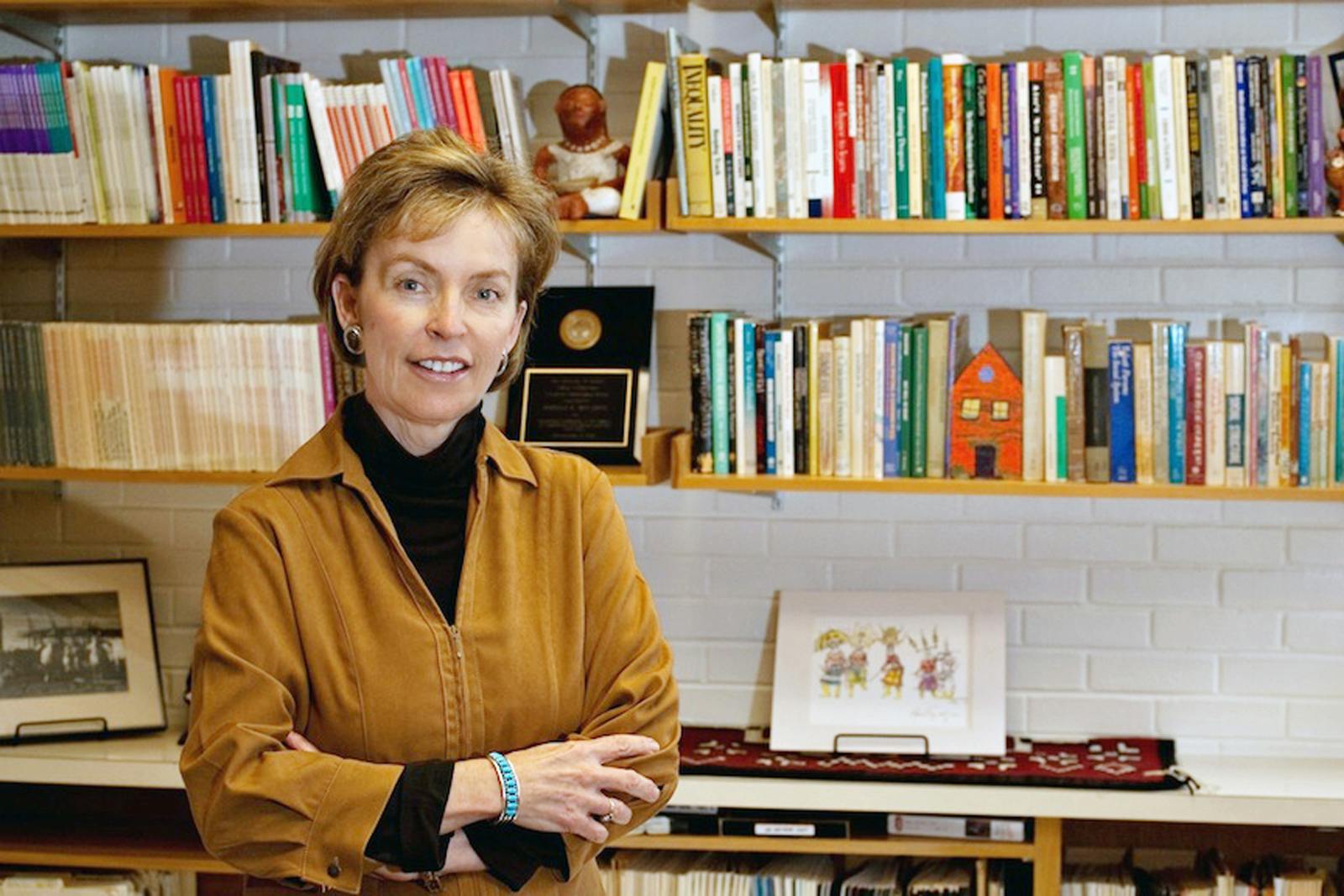Indigenous-language Immersion Can Narrow Achievement Gap for Native American Students
What can a study of Indigenous-language immersion schooling teach us to improve education practice for underserved Native American students? This question anchors a recently funded national study being led at UCLA by Education Professors Teresa McCarty and Michael Seltzer. The four-year (2016-2020) study is supported by a $1 million Spencer Foundation grant. McCarty and Seltzer are co-principal investigators alongside Tiffany S. Lee, associate director and professor of Native American Studies at the University of New Mexico, and Sheilah E. Nicholas, associate professor of Teaching, Learning and Sociocultural Studies at the University of Arizona.
The study grows out of Native American community concerns about the loss of Native languages among younger generations, coupled with enduring academic disparities for Native American students as a group.
“The loss of Indigenous languages is a worldwide phenomenon,” says McCarty, “directly related to colonization and policies of linguistic and cultural repression.” Yet, “despite the fact that more Native children enter school speaking English as a primary language, that alone has not reversed pervasive inequities in education opportunities and outcomes for these students.”

Recent research (Brayboy, B.M.J., & Maaka, M. (2015). K-12 achievement for Indigenous students. Journal of American Indian Education, 54(1), 63-98.) shows a widening achievement gap between Native and White middle-class students in key subject areas such as reading and mathematics. Just 51% of all American Indian and Alaska Native students graduate from high school, compared with 80% of White students, and less than 10% of Native high school students complete a college degree.
“As one indicator of how deep these disparities run,” McCarty notes, “a recent national study (National Indian Education Study, 2015) of more than 10,000 Native American eighth graders showed that almost two-thirds—63%—reported never talking to a school counselor about classes for high school or future plans.”
Indigenous-language immersion (ILI) is a promising educational innovation intended to counter these inequities. While ILI schools adhere to the same standards as traditional schooling, students learn academic subject matter, including English, by using their Native American languages, through instruction that is culturally based. The goals are to revitalize and sustain Indigenous languages, produce academic outcomes on par with or surpassing students in non-immersion programs, and enhance students’ cultural knowledge and pride.
“These are unique, holistic programs,” says Nicholas, “that accent the intersection between academics, cultural knowledge, and restorative language use.”

By examining ILI across diverse Native American linguistic and cultural settings, the study will show how, when, for whom, and why ILI may be beneficial. On a larger scale, say the researchers, this unique study offers a rich opportunity to better understand program variation and its education effects. This will aid diverse Native American communities in improving education opportunities and outcomes for their children, and will also inform comprehensive school reforms for non-dominant students that involve the coordinated efforts of teachers, administrators, parents, and communities.
Equally important, says Lee, “A study like this can help reinforce—not just for Native communities, but for the general public—that learning a heritage language or another second language has tremendous positive impacts. The knowledge embedded in languages can truly enhance our world.”
The mixed-method study includes a national survey of ILI programs and in-depth case studies of eight carefully matched pairs of ILI and non-immersion schools.
“Each pair provides a study of differences in the learning opportunities that students in ILI and non-immersion schools experience,” Seltzer explains, “enabling us to obtain estimates of the impact of ILI versus non-immersion schooling on an array of outcomes of interest—bilingual-biliteracy proficiencies, cultural knowledge, mathematics, and English language arts.”
“It may be,” he notes, “that certain factors emerge as especially important—particular ways that community members, teachers, and parents work together—that would not be fully understood or might be overlooked without the in-depth work conducted at each site.”
McCarty sums up the study’s significance.
“Children only get one chance at their K–12 education, and it serves them for life,” she says. “All children deserve the best evidence we can provide to help ensure they have access to an equitable, high-quality education. And, this is especially important for children from Native and other non-dominant communities.”
Professors McCarty, Lee, and Nicholas have collaborated on several recent publications, including books and book chapters in “Indigenous Youth and Multilingualism” (Leisy T. Wyman, Teresa L. McCarty, and Sheilah E. Nicholas, co-editors, New York: Routledge, 2014); and “Indigenous Language Revitalization in the Americas” (Serafín Coronel-Molina and Teresa L. McCarty, co-editors, New York: Routledge, 2016).
Professor Seltzer’s recent work includes an article with Jordan Rickles titled, “A Two-stage Propensity Score Matching Strategy for Treatment Effect Estimation in a Multisite Observational Study,” in the Journal of Educational and Behavioral Statistics (2014); and a book chapter with UCLA Professor Mike Rose titled “Constructing Analyses: The Development of Thoughtfulness in Working with Quantitative Methods,” in SAGE’s “Handbook for Research in Education: Engaging Ideas and Enriching Inquiry” (2011).
Photograph courtesy of Nāwahīokalani‘õpu‘u Laboratory School, Hilo, Hawaii